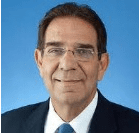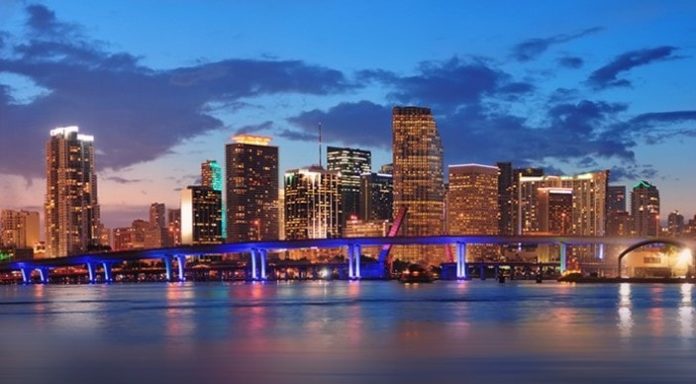|
Getting your Trinity Audio player ready...
|
 Today’s headline in the Miami Herald touts good news for once; only 22 coronavirus deaths “reported Monday” statewide.
Today’s headline in the Miami Herald touts good news for once; only 22 coronavirus deaths “reported Monday” statewide.
In reality – and despite the Herald’s continued mis-reporting, which goes back about a month – the actual deaths reported so far for the last three days (September 4, 5 and 6) were 18 in total.
Leaving aside the lack of solid reporting by our principal English daily, the question that arises is what exactly have we done right in the last couple of months, when the decision to reopen (under the so-called Phase 2 parameter) was suddenly reversed by county Mayor Gimenez, who was clearly prodded into reversing course by an alarmist, unscientific local media?
I should add, by way of commendation, that Channel 6 reporters Trina Robinson and Jawan Strader saw the statistics correctly from day one. This revelation came to me when discussing the retroactive batch reports published by The Herald which gave figures as high as 256 “daily reported deaths” for Florida in mid and late July. The discussion was with none other than my banker, as I was explaining that these batch reports were retroactive adjustments that went back as much as a month or more; on hearing that, good old Ramon Casanova (Firstbank of Florida) informed me that the Robinson/Strader duo explained that clearly in every broadcast.
Double kudos to them!
Back to reality. Far from Miami ever being the “epicenter” or the “Wuhan” of some sort of second waver of COVID-19, what we have done so far to deal with this novel virus is nothing less than heroic and a model for the nation. In a county of almost three million, with entry ports that make us an international city extraordinaire, Miami-Dade has experienced less total fatalities (a little over 2,000) than New York City had in one day at the peak of the virus.
And we have done so without totally choking our businesses or driving our municipal governments to insolvency.
So this begs the question of what exactly is the correlation between our recent success and the slowing down of both deaths and confirmed cases. There are four possible factors: (1) increased immunity, (2) protective measures, (3) improved treatment of the sick and (4) a lessening of the strength of the novel virus by mutations.
My conclusion, after much analysis and consultation of the real experts (not the ones advising the county mayor – one of whom lists her medical degree as being obtained in the “Pontifical University,” which is laughable since every Catholic country in Latin America has a “pontifical university”) – is actually that all four factors are at play.
But not in the same populations. We must sectorize the four quartiles, as I did a couple of months ago in Community Newspapers.*
The four quartiles (each constituting about 700,000 people) are as follows.
1. The Elderly and Infirm. Miami-Dade acted quickly to shut off any major contagion of long-term care facilities. In addition, the stay-at-home elderly population has literally gone into permanent, self-imposed quarantine. Chalk one to factor #2, protective measures.
2. The Work-From-Home Folks. With few exceptions, the great majority of office workers, including almost all lawyers, entrepreneurs and government as well as business managers – plus spouses – have avoided contact with non-family members. Only now are they beginning to show up for work. The thing is that by now the novel virus is probably a novel-novel virus, having undergone as many as 18 mutations. Furthermore, the number of those with so-called herd immunity has increased to somewhere between 10% and 20%, which probably includes many of the folks in this category, who have had some contact with strangers, but possibly have developed immunity by being infected by small doses of either the first virus or its weakened successor. Chalk this one to factors #1, 2 and 4: increased immunity, protective measures and lessening of strength of the virus.
3. Teachers and Students. Again numbering about 700,000, the school-age children and their teachers, from Kindergarten through graduate school, have simply stayed out of public spaces and contact with anyone except family. A few youngsters who had some contact with coaches in home-made summer camps got the virus from their coaches, but almost none perished or even had to be hospitalized. As for the teachers/school personnel, there were 900 who reported having some form of the coronavirus; none that I know of died and very few, if any, were hospitalized. Again the three factors at play are #1, 2 and 4: increased immunity, protective measures and lessening of strength of the virus.
4. Leisure Industry and Its Customers. If one includes airport, seaport, hotels and restaurants, plus the customers, this sector of our population has been slowly waking up during the last two months, after a total shutdown that took place from mid-March through June. The media and their “experts” would argue that the lessening of both confirmed cases and mortality are due to factor #2 (protective measures) and that was certainly the case for the first phase of the pandemic. (Having no tourists from abroad and no contact between servers and customers in this industry is obviously going to reduce contagion…) But that is not what the analysis shows for the current wave, although the media will never admit it. The analysis of the current situation – which will be borne out as soon as the restaurant re-openings, which began August 31 – is that the factors at play in mortality are mainly #1, #3 and #4: increased immunity, improved treatment of the sick and lessened strength of the virus.
It would do well for the local and national media to analyze these things from a scientific standpoint, rather than their political inclination. The real experts, including the chief, local epidemiologist for the Florida Department of Health, have told me in no uncertain terms that the current version of the virus is quite mild. Many national and international experts have also opined that some level of herd immunity has already taken place. Our own data for front-line workers, in both Miami-Dade and the City of Miami, indicates that roughly 7% of them have contracted the virus; thankfully, few have died, due to improved treatment and the youth/natural immune systems of our first-responders.
And it would do extremely well for our hospitality industry, as well as our economy generally, if we would stop trying to impose silly measures like curfews that are not needed, tend to divide our community, alienate our youth and scare away the visitors who are the bread and butter of our working class.






